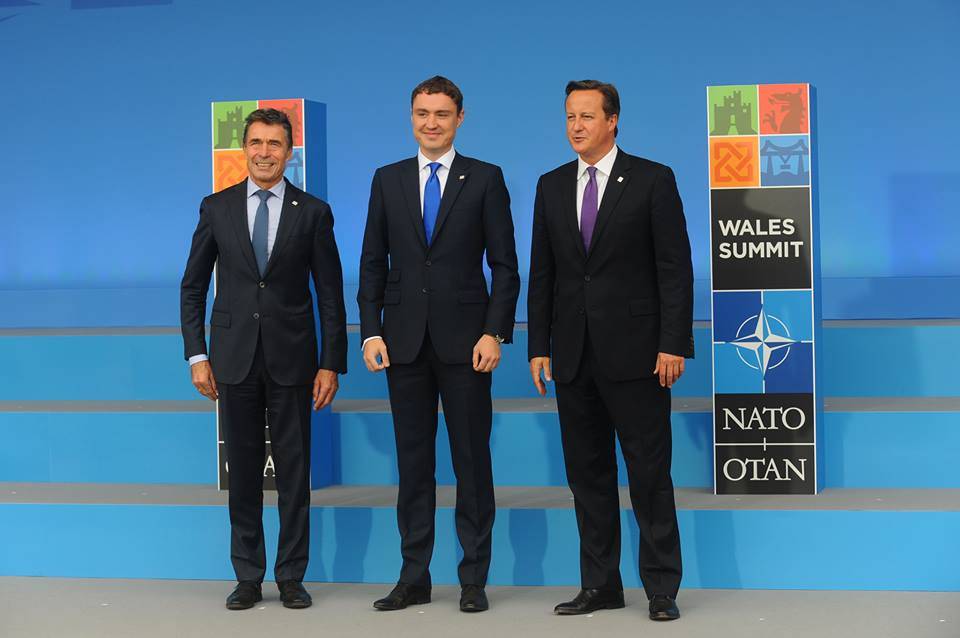Last week’s NATO summit in Newport, Wales, featured the largest gathering of world leaders in the history of the United Kingdom, and not without good reason. Transatlantic security is being challenged around its perimeter by brutal civil wars and undeclared stealth invasions, by resurgent state adversaries as well as nascent non-state groupings. The time was right for NATO to powerfully reaffirm its unique role in the present and future of world affairs, and it did so with ambition, clarity and resolve.
Estonia and its leaders can certainly walk away from the summit with heads held high. The combination of US President Barack Obama’s visit and the actions taken by the allies have sent a strong signal to the East and provided significant reassurance for Estonia. The agreement to establish the Joint Expeditionary Force led by the UK and involving many of the allies, including Estonia, who worked together in Afghanistan’s Helmand province also ensures that the gains and relationships created there will be effectively followed up on. The long-awaited adoption of Estonia’s cyber range as NATO’s official cyber training ground was also a substantial step forward not only for Estonia’s role in the alliance but also NATO’s increasing cyber capabilities. On a broader level, Estonia can take heart from the reinvigoration of NATO and its ability to continue to deliver collective defence in addition to its other missions of crisis management and cooperative security.
The Wales Declaration on the Transatlantic Bond, a 28-page, 113-point document that was the summit’s main outcome, was a sweeping yet thorough articulation of the alliance’s strategic posture, political positions and near- as well as long-term priorities. Crucially, member states committed to halting the decline in defence spending and aiming to reach 2% of GDP and investing 20% of that into advanced capabilities and R&D in the next decade. The allies also formalised reassurance measures for Eastern Europe, including Estonia, by committing to a high-readiness “spearhead force”, prepositioned infrastructure, an even more active exercise schedule and more in-depth planning. More abstractly, with the Wales Declaration, NATO also acknowledged the need for a more active, capable Europe in transatlantic security affairs, and by signing it, the European leaders indicated their willingness to reassume the share of the burden for international security that had been shifting to North America for a number of years prior to the summit.
For these reasons and many others, the Wales summit signalled the arrival of a new kind of NATO. In a changed security context, with Russia no longer a strategic “partner” but a threat to the vision of a “Europe whole, free, and at peace” that lies at its core, the allies are moving forward into a prolonged period of instability with new purpose. They are addressing cyber security by affirming that it is a part of collective defence and governed by international law. They are continuing to work with partners and increase the potential for cooperation by improving the interoperability of their armed forces. NATO continues to retain a strong attraction for non-member states and to leave the door open to new members. NATO has even begun to take the pressing issue of energy security into account. As Deputy Secretary General Alexander Vershbow put it to the NATO Future Leaders Summit that the author was privileged to attend, “In the coming years, NATO will have to walk, chew gum and juggle at the same time.” And at Wales, the Alliance committed itself to once again be up for the task.
However, NATO is not the only organisation of states with a role in European security and many of the emerging threats and challenges that NATO states will continue to face will not be susceptible to the type of military solutions that NATO specialises in. In this respect, the Wales summit provided another look at the future when foreign ministers met with the EU High Representative for Foreign Affairs and Security Policy, the OSCE Chairman-in-Office and the Secretary General of the Council of Europe to discuss closer cooperation. There is certainly potential for these organisations (and Estonia is a member of all of them) to bring to bear their individual social (normative), political, economic and, if necessary, military resources as part of a wider effort to uphold international law, human rights and European security. In a world of cross-cutting threats and challenges, this kind of coordination can and should be taking place more regularly.
In the last quarter-century, the usefulness and necessity of NATO’s existence has often been called into question by various pundits. Yet the allies have always found NATO to be an invaluable vehicle for attaining peace and security in Europe and its vicinity. NATO summits in the UK have played a central part in that process. At the London summit of 1990, the alliance agreed to extend a hand of friendship to Central and Eastern Europe, and the rest is history. Due to events in Ukraine, Wales was also a historic summit. With the benefit of hindsight, we will be able to analyse its outcomes more clearly when NATO next convenes in Poland for the 2016 summit. Yet looking into the future from the present moment, the alliance is geared to be stronger, sharper, and more flexible in addressing its pressing challenges going forward. Russia may still be inclined to conduct petty provocations such as the recent kidnapping of the Estonian security police officer, but that should not be allowed to overshadow the fact that Estonia’s overall security was strengthened substantially by last week’s events.
I
Cover photo: NATO Secretary General Anders Fogh Rasmussen, Estonian Prime Minister Taavi Rõivas and British Prime Minister David Cameron at NATO summit in Wales.
You can also follow Patrik Maldre on Twitter.

